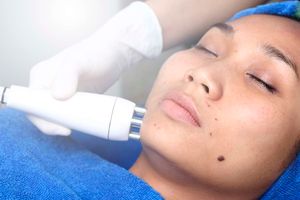What is heat rash, plus 8 tips to treat it

Scratching your skin will spread the rash and cause more discomfort.
What you need to know:
- Heat rashes typically develop on areas of skin that are covered by tight clothing such as long pants and collars.
- Avoid using scented or artificial moisturising products that can further irritate sensitive skin types. If symptoms worsen over time, see a doctor to rule out any other underlying medical condition.
- Take cool showers or baths regularly to help your body's temperature return to normal and for treating the rash itself.
A heat rash is a skin irritation caused by an increase in body temperature usually from spending too much time in the sun. This is a common condition among children because they play outside for extended periods of time during hot weather. It is also common in the tropics where the sun is more intense.
Heat rashes typically develop on areas of skin that are covered by tight clothing such as long pants and collars. It also affects those with sensitive skin who don't do well in hot weather. Even though heat rash isn't a serious condition, left untreated, it can develop into a more serious sunburn.
Here are some tips to treat a heat rash
Wear loose-fitting clothes, made of natural fibres such as cotton or linen. This will allow your skin to breathe better so you don't sweat too much while also covering your skin. Avoid wearing synthetic materials like nylon.
Stay in the shade whenever possible to limit your exposure to direct sunlight, especially during peak hours of 11 AM - 3 PM when the sun is at its strongest.
Drink lots of water to keep your body hydrated and cool, especially if you're engaging in physical activity.
Take cool showers or baths regularly to help your body's temperature return to normal and for treating the rash itself.
Apply sunscreen with an SPF (Sun Protection Factor) of at least 30 to protect your skin from the sun's rays.
Use an air conditioner or fans to keep the temperature in your home or office cool.
If possible, don't engage in any strenuous activities when you have a heat rash because it can worsen symptoms and cause more discomfort. Strenuous activity includes anything that gets your heart rate up or makes you sweat heavily. You should also take frequent breaks if you are physically active.
Treating heat rashes
Use a cool compress with ice
To help soothe the heat rash and reduce itching, use a cold compress. Put ice cubes in the affected area, wherever you are experiencing discomfort. Alternatively, use a cold cloth or washcloth that has been soaked in cold water.
Apply aloe Vera and neem
To help soothe the skin, you can apply aloe Vera gel or lotion. You can also break off a leaf from an aloe plant and squeeze its juice on your rash to provide some relief. Neem has anti-inflammatory, anti-fungal, and antimicrobial properties that can help treat the rash.
Use baking soda
Prepare a bath with baking soda and water to soak the affected area of your skin. You can also put some baking soda on a cloth or cotton ball, place it directly against the heat rash if you need relief from itching at any point.
Use sandalwood powder
To help heal the heat rash, mix sandalwood powder with water and apply it to your skin. This will provide relief from itching as it has a cooling effect and reduces redness and inflammation.
Apply creams and ointments
You can use hydrocortisone cream or other anti-itch creams if you feel that the rash is itchy. This will reduce itching and help heal your skin faster than just using home remedies alone.
Take over-the-counter medications
Take ibuprofen for pain relief and fever reduction, if necessary. You can also use anti-inflammatory cream to help reduce the heat rash. Antihistamine tablets can also be used to relieve the skin irritation caused by heat rash.




